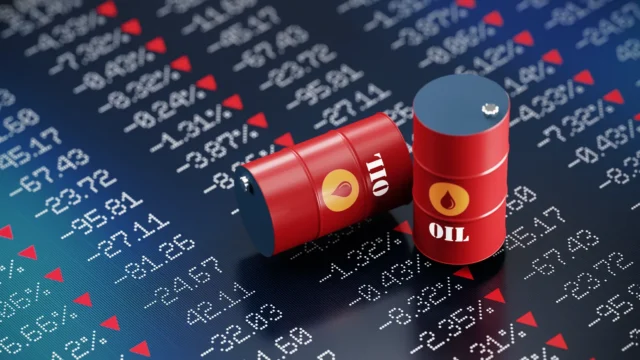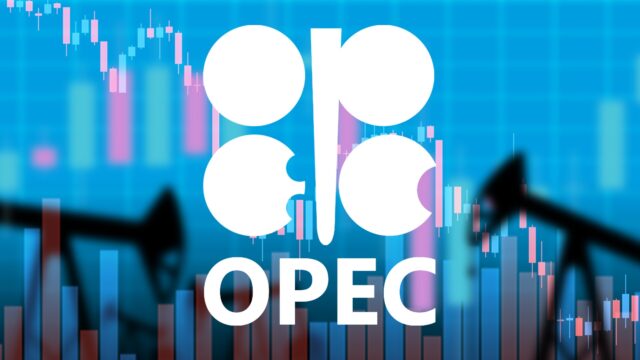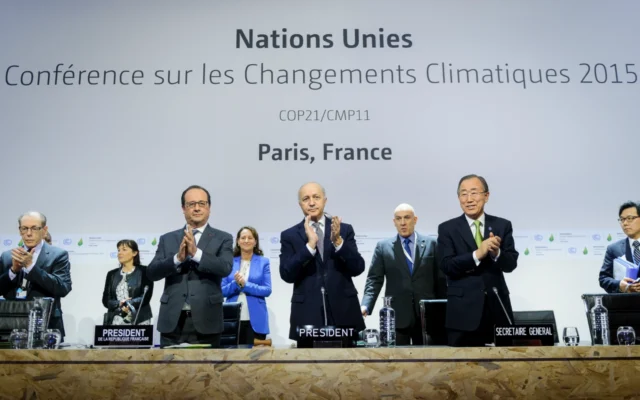
The global oil market – is a whirlwind of a world where colossal tankers, cutting-edge technology, and geopolitics intermingle. It’s a universe where the whisper of an economic forecast or a geopolitical rumble in a far-off land can send prices soaring or plummeting, affecting everything from the cost of your commute to the health of national economies.
Oil is more than just ‘black gold.’ It’s the lifeblood of modern civilization, powering our cars, heating our homes, and forming the raw material for countless products we use daily. But what factors determine its price? Let’s embark on a journey into the fascinating dynamics of the oil market.
The Crucial Role of OPEC in Oil Pricing

When talking about the oil market, the Organization of the Petroleum Exporting Countries (OPEC) – a cartel of 13 nations – is impossible to ignore. Holding approximately 82% of the world’s proven oil reserves, OPEC has a significant influence on global prices.
OPEC’s mission is to ‘coordinate and unify’ its members’ petroleum policies, essentially managing supply to control prices. If OPEC cuts production, prices typically rise due to the decreased supply. Conversely, as mentioned by oilprofit.app, if OPEC increases production, prices can fall due to the increased supply. However, OPEC’s power isn’t absolute; non-OPEC producers, like the United States and Russia, also play a vital role in shaping the market.
Impact of Geopolitical Factors on Prices
Geopolitics can swing oil prices dramatically. Consider how a conflict, strikes, or political unrest in an oil-rich region can disrupt production, causing supply shortages and price spikes. On the other hand, peace treaties or stability can increase production, potentially leading to oversupply and price drops.
For instance, the 1990 Gulf War saw prices double due to fears of a supply disruption. More recently, the 2020 Saudi-Russian price war flooded the market with oil, causing prices to plummet. These examples underline how geopolitics can create volatility in the market.
Effects of Economic Growth and Industrial Development on Demand
The engine of global economic growth and industrial development runs largely on oil. As economies grow and industrialize, their appetite for oil increases, influencing its price.
Developing countries, especially populous ones like India and China, exemplify this. Their rapid economic expansion in the past few decades has led to an explosion in energy demand, contributing to higher oil prices. Conversely, during economic recessions or slowdowns, the demand for oil often decreases, putting downward pressure on prices.
Exploring the Relationship between Currency Exchange Rates and Oil Prices

There’s an intriguing dance between petroleum prices and currency exchange rates, particularly the US dollar. It is primarily traded in dollars on the international market, so fluctuations in the dollar’s value can significantly impact black gold prices.
When the dollar strengthens against other currencies, oil becomes more expensive for countries using those currencies, potentially leading to decreased demand and lower prices. Conversely, when the dollar weakens, it becomes cheaper for those countries, which could boost demand and push prices up.
Role of Technological Advancements in Oil Exploration and Production
Technology has always been a game-changer in the petroleum industry. Advancements in exploration and production technologies can increase oil supply and influence prices.
In the past decade, hydraulic fracturing (‘fracking’) and horizontal drilling have revolutionized the industry, particularly in the United States. These technologies unlocked vast reserves in shale formations previously considered uneconomical to extract, turning the US into the world’s top producer and affecting global oil prices.
The Influence of Environmental Policies and Climate Change Agreements
Increasing environmental consciousness and climate change initiatives are shaping the future of the market. Policies aiming to reduce carbon emissions are encouraging the transition towards renewable energy sources, which could decrease the long-term demand for oil.
Moreover, the Paris Agreement’s commitment to limit global warming could further reduce petroleum consumption. In this evolving landscape, companies are diversifying into cleaner energy sectors to stay relevant and profitable.
Understanding the Speculative Role of Futures Trading in Oil Prices
Beyond the physical petroleum market lies the complex world of futures trading. Traders buy and sell contracts committing to the future delivery of oil, speculating on price changes to make a profit.
These speculative activities can cause significant price swings. For example, if traders anticipate a supply disruption due to a potential geopolitical conflict, they may start buying futures contracts, pushing prices up even before the actual supply is affected.
Effect of Global Crises and Pandemics on Oil Demand and Supply
Global crises, such as pandemics or financial crashes, can have a profound impact on the petroleum market. The COVID-19 pandemic perfectly illustrates this. As countries went into lockdown, global travel restrictions and economic slowdowns led to an unprecedented drop in oil demand, causing prices to crash.
However, global crises can also affect the supply side. For example, the 2008 financial crisis led to a sharp drop in oil investments, which eventually resulted in reduced production and higher prices in the following years.
Trends and Predictions: The Future of the Market

Predicting the future of the petroleum market is a complex task, given its susceptibility to a wide range of unpredictable factors. Nevertheless, several trends are worth noting.
Firstly, the transition towards renewable energy sources is expected to slow the growth of global petroleum demand in the coming decades. Secondly, technology will continue to shape the industry, with digitalization and artificial intelligence promising to make oil exploration and production more efficient. Finally, the geopolitical landscape will remain a wild card, with potential conflicts and policy changes adding an element of uncertainty.
Despite the unpredictability, one thing remains certain: the black gold market, with its dynamic interplay of forces, will continue to be a crucial part of the global economy, influencing and being influenced by the tides of change.
The Influence of Consumer Behavior and Efficiency Standards
Consumer behavior and global efficiency standards play a pivotal role in shaping the oil market. As consumers become more environmentally conscious, there is a growing demand for fuel-efficient vehicles and alternative forms of energy, impacting oil demand. Governments and international bodies are also implementing stricter efficiency standards for vehicles and industries, which contribute to reducing oil consumption.
For instance, the adoption of electric vehicles (EVs) is expected to significantly decrease oil demand for transportation, which currently accounts for a large portion of global oil consumption. This shift not only reflects changing consumer preferences but also underscores the impact of policy and innovation on the oil market. These trends are closely monitored by experts, including those at Arrowhead Economics’ oil and gas consulting services, which provide insights into how shifts in consumer behavior and efficiency standards could reshape the energy landscape.
The Role of Investment Flows and Market Sentiment
Investment flows and market sentiment are crucial in determining the oil market’s direction. Investor confidence in the oil sector can significantly affect exploration and production activities. High levels of investment can lead to increased oil production capacities, potentially putting downward pressure on prices if demand does not keep pace.
Conversely, negative market sentiment, influenced by concerns over long-term demand or geopolitical risks, can lead to reduced investments. This scenario might tighten supply and push prices higher. Market analysts and consulting firms, closely watch these investment trends to forecast market movements. Their analyses help investors and companies navigate the complexities of the oil market, balancing between immediate financial returns and the sector’s long-term sustainability amidst evolving energy landscapes.
Conclusion
In conclusion, the oil market’s complexity is a product of an intricate web of factors, including OPEC decisions, geopolitics, economic growth, currency exchange rates, technological advancements, environmental policies, futures trading, and global crises. Understanding these factors is essential for anyone interested in the market, whether a casual observer or a seasoned trader.













